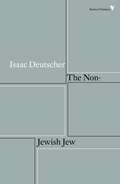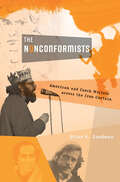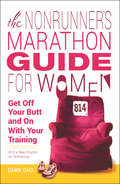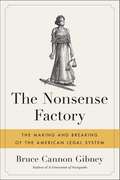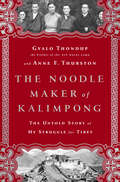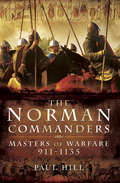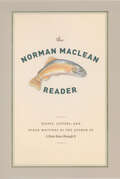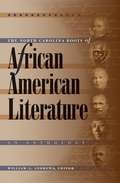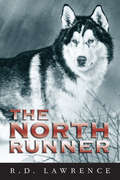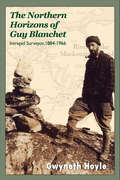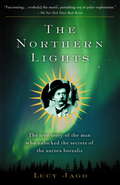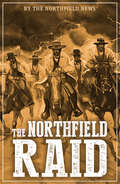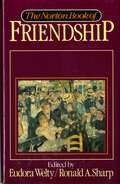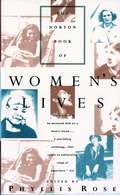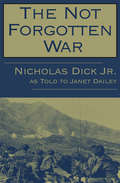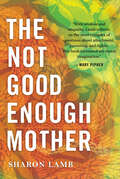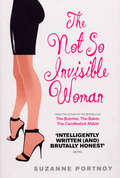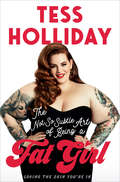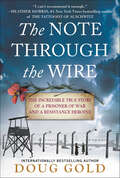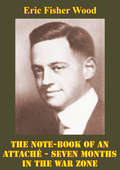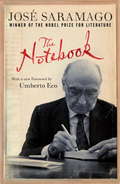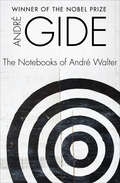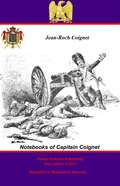- Table View
- List View
The Non-Jewish Jew: And Other Essays
by Isaac Deutscher Tamara DeutscherEssays on Judaism in the modern world, from philosophy and history to art and politicsIn these essays Deutscher speaks of the emotional heritage of the European Jew with a calm clear-sightedness. As a historian he writes without religious belief, but with a generous breadth of understanding; as a philosopher he writes of some of the great Jews of Europe: Spinoza, Heine, Marx, Trotsky, Luxemburg, and Freud. He explores the Jewish imagination through the painter Chagall. He writes of the Jews under Stalin and of the “remnants of a race“ after Hitler, as well as of the Zionist ideal, of the establishment of the state of Israel, of the Six-Day War, and of the perils ahead.
The Nonconformists: American and Czech Writers across the Iron Curtain
by Brian K. GoodmanHow risky encounters between American and Czech writers behind the Iron Curtain shaped the art and politics of the Cold War and helped define an era of dissent.“In some indescribable way, we are each other’s continuation,” Arthur Miller wrote of the imprisoned Czech playwright Václav Havel. After a Soviet-led invasion ended the Prague Spring, many US-based writers experienced a similar shock of solidarity. Brian Goodman examines the surprising and consequential connections between American and Czech literary cultures during the Cold War—connections that influenced art and politics on both sides of the Iron Curtain.American writers had long been attracted to Prague, a city they associated with the spectral figure of Franz Kafka. Goodman reconstructs the Czech journeys of Allen Ginsberg, Philip Roth, and John Updike, as well as their friendships with nonconformists like Havel, Josef Škvorecký, Ivan Klíma, and Milan Kundera. Czechoslovakia, meanwhile, was home to a literary counterculture shaped by years of engagement with American sources, from Moby-Dick and the Beats to Dixieland jazz and rock ’n’ roll. Czechs eagerly followed cultural trends in the United States, creatively appropriating works by authors like Langston Hughes and Ernest Hemingway, sometimes at considerable risk to themselves.The Nonconformists tells the story of a group of writers who crossed boundaries of language and politics, rearranging them in the process. The transnational circulation of literature played an important role in the formation of new subcultures and reading publics, reshaping political imaginations and transforming the city of Kafka into a global capital of dissent. From the postwar dream of a “Czechoslovak road to socialism” to the neoconservative embrace of Eastern bloc dissidence on the eve of the Velvet Revolution, history was changed by a collision of literary cultures.
The Nonrunner's Marathon Guide for Women
by Dawn DaisDawn Dais hated running. And it didn't like her much, either. Her fitness routine consisted of avoiding the stairs in her own house, because who really has the energy to climb stairs? It was with this exercise philosophy firmly in place that she set off to complete a marathon.The Nonrunner's Marathon Guide for Women is a fun training manual for women who don't believe that running is their biological destiny but who dream of crossing the finish line nonetheless. Revised in 2013, it now includes a new chapter on using technology as a training aid.Dais's book features a realistic training schedule and is chock-full of how-to's, quizzes, and funny observations, which she felt were lacking in the guides she had consulted. She also integrates entries from her journal, sharing everything would-be marathoners need to know about the gear, the blisters, the early morning workouts, the late-night carb binges, and-most important of all-the amazing rewards.Anyone can do a marathon. This book just makes the experience a little more bearable and a lot more fun.
The Nonsense Factory: The Making and Breaking of the American Legal System
by Bruce Cannon GibneyA withering and witty examination of how the American legal system, burdened by complexity and untrammeled growth, fails Americans and threatens the rule of law itself, by the acclaimed author of A Generation of Sociopaths.Our trial courts conduct hardly any trials, our correctional systems do not correct, and the rise of mandated arbitration has ushered in a shadowy system of privatized "justice." Meanwhile, our legislators can't even follow their own rules for making rules, while the rule of law mutates into a perpetual state of emergency. The legal system is becoming an incomprehensible farce. How did this happen?In The Nonsense Factory, Bruce Cannon Gibney shows that over the past seventy years, the legal system has dangerously confused quantity with quality and might with legitimacy. As the law bloats into chaos, it staggers on only by excusing itself from the very commands it insists that we obey, leaving Americans at the mercy of arbitrary power. By examining the system as a whole, Gibney shows that the tragedies often portrayed as isolated mistakes or the work of bad actors -- police misconduct, prosecutorial overreach, and the outrages of imperial presidencies -- are really the inevitable consequences of law's descent into lawlessness.The first book to deliver a lucid, comprehensive overview of the entire legal system, from the grandeur of Constitutional theory to the squalid workings of Congress, The Nonsense Factory provides a deeply researched and witty examination of America's state of legal absurdity, concluding with sensible options for reform.
The Noodle Maker of Kalimpong: The Untold Story of My Struggle for Tibet
by Gyalo Thondup Anne F. ThurstonIn December 2010 residents of Kalimpong, a town on the Indian border with Tibet, turned out en masse to welcome the Dalai Lama. It was only then they realized for the first time that the neighbor they knew as the noodle maker of Kalimpong was also the Dalai Lama’s older brother. The Tibetan spiritual leader had come to visit the Gaden Tharpa Choeling monastery and join his brother for lunch in the family compound. Gyalo Thondup has long lived out of the spotlight and hidden from view, but his whole life has been dedicated to the cause of his younger brother and Tibet. He served for decades as the Dalai Lama’s special envoy, the trusted interlocutor between Tibet and foreign leaders from Chiang Kai-shek to Jawaharlal Nehru, Zhou Enlai to Deng Xiaoping. Traveling the globe and meeting behind closed doors, Thondup has been an important witness to some of the epochal events of the 20th century. No one has a better grasp of the ongoing great game as the divergent interests of China, India, Russia and the United States continue to play themselves out over the Tibetan plateau. Only the Dalai Lama himself has played a more important role in the political history of modern, tragedy-ridden Tibet. Indeed, the Dalai Lama’s dramatic escape from Lhasa to exile in India would not have been possible without his brother’s behind-the-scenes help. Now, together with Anne F. Thurston, who co-wrote the international best seller The Private Life of Chairman Mao, Gyalo Thondup is finally telling his story. The settings are exotic--the Tibetan province of Amdo where the two brothers spent their early childhood; Tibet’s legendary capital of Lhasa; Nanjing, where Thondup received a Chinese education; Taiwan, where he fled when he could not return to Tibet; Calcutta, Delhi, and the Himalayan hill towns of India, where he finally made his home; Hong Kong, which served as his listening post for China, and the American Rockies, where he sent young Tibetan resistance fighters to be trained clandestinely by the CIA. But Thondup's story does not reiterate the otherworldly, Shangri-La vision of the Land of Snows so often portrayed in the West. Instead, it is an intimate, personal look at the Dalai Lama and his immediate family and an inside view of vicious and sometimes deadly power struggles within the Potala Palace--that immensely imposing architectural wonder that looms over Lhasa and is home to both the spiritual and secular seats of Tibetan power.
The Norman Commanders: Masters of Warfare, 911–1135
by Paul HillThis illustrated history sheds light on the greatest commanders of medieval Norman warfare, covering all their conquests from France to the Near East. Robert Guiscard, William the Conqueror, Roger I of Sicily, and Bohemond Prince of Antioch are just four of the exceptional Norman commanders who led their armies to victory and created their own kingdoms. Their single-minded leadership, and the skill and discipline of their armies, made them nearly unstoppable in their time. In this volume, Paul Hill studies their brilliant careers—along with those of Robert Curthose, William Rufus, Richard I of Capua and Henry I of England. In a narrative packed with detail and insight, and with a wide-ranging understanding of the fighting methods and military ethos of the period, Hill traces the course of their conquests, focusing on their leadership and achievements on the battlefield. The military context of their campaigns, and the conditions of warfare in France and England, in southern Italy and Sicily, and in the Near East, are vividly described. Among the operations and sieges covered in detail are Hastings, Bremule, Tinchebrai, Civitate, Misilmeri, Dyrrhachium, and Antioch. Paul Hill&’s accessible and authoritative account offers a fascinating portrait of these historic conflicts and the commanders who fought them.
The Norman Maclean Reader: Essays, Letters, and Other Writings by the Author of A River Runs through It
by Norman MacLeanSelected works and incidental writings by the celebrated author of A River Runs Through It, plus excerpts from a 1986 interview.In his eighty-seven years, Norman Maclean played many parts: fisherman, logger, firefighter, scholar, teacher. But it was a role he took up late in life, that of writer, that won him enduring fame and critical acclaim—as well as the devotion of readers worldwide. Though the 1976 collection A River Runs Through It and Other Stories was the only book Maclean published in his lifetime, it was an unexpected success, and the moving family tragedy of the title novella—based largely on Maclean’s memories of his childhood home in Montana—has proved to be one of the most enduring American stories ever written.The Norman Maclean Reader is a wonderful addition to Maclean’s celebrated oeuvre. Bringing together previously unpublished materials with incidental writings and selections from his more famous works, the Reader will serve as the perfect introduction for readers new to Maclean, while offering longtime fans new insight into his life and career.In this evocative collection, Maclean as both a writer and a man becomes evident. Perceptive, intimate essays deal with his career as a teacher and a literary scholar, as well as the wealth of family stories for which Maclean is famous. Complete with a generous selection of letters, as well as excerpts from a 1986 interview, The Norman Maclean Reader provides a fully fleshed-out portrait of this much admired author, showing us a writer fully aware of the nuances of his craft, and a man as at home in the academic environment of the University of Chicago as in the quiet mountains of his beloved Montana.Various and moving, the works collected in The Norman Maclean Reader serve as both a summation and a celebration, giving readers a chance once again to hear one of American literature’s most distinctive voices.Praise for The Norman MacLean Reader“A solid, satisfying, well-made body of work by a patient craftsman.” —Chicago Tribune“The Norman Maclean Reader fills out and makes more human the impressions of the restless, inquiring storyteller we saw in previously published works. In his writings, at their best, we too feel the thrusts and strains. He is a writer of great beauty, in his own terms.” —Financial Times“Weltzien has not only done great service for Norman Maclean’s readers, he has rightly expanded Maclean’s place in American literature . . . . For me, The Norman Maclean reader is discovered treasure.” —Bloomsbury Review
The North Carolina Roots of African American Literature
by William L. AndrewsThe first African American to publish a book in the South, the author of the first female slave narrative in the United States, the father of black nationalism in America--these and other founders of African American literature have a surprising connection to one another: they all hailed from the state of North Carolina.This collection of poetry, fiction, autobiography, and essays showcases some of the best work of eight influential African American writers from North Carolina during the nineteenth and early twentieth centuries. In his introduction, William L. Andrews explores the reasons why black North Carolinians made such a disproportionate contribution (in quantity and lasting quality) to African American literature as compared to that of other southern states with larger African American populations. The authors in this anthology parlayed both the advantages and disadvantages of their North Carolina beginnings into sophisticated perspectives on the best and the worst of which humanity, in both the South and the North, was capable. They created an African American literary tradition unrivaled by that of any other state in the South. Writers included here are Charles W. Chesnutt, Anna Julia Cooper, David Bryant Fulton, George Moses Horton, Harriet Jacobs, Lunsford Lane, Moses Roper, and David Walker.
The North Runner
by R. D. Lawrence Max FinkelsteinThe North Runner is a true and moving story of the building of trust between a man and an exceptional dog that was half wolf, half Alaskan Malamute, and the resulting mutual affection and respect between them.
The Northern Horizons of Guy Blanchet: Intrepid Surveyor, 1884-1966
by Gwyneth HoyleThe working life of the distinguished surveyor Guy Blanchet reflects the story of northern Canada in the first half of the twentieth century. Beginning his career in the boreal forests of Alberta and Saskatchewan, using pack horses and dog teams, Blanchet went north to map large areas of the Barrens by canoe, and soon became caught up in pioneer northern aviation. His story encompasses the Great Depression and the Second World War, which in turn led to his work finding the routes for oil pipelines. His life was rich in contacts with First Nations people, and his friendships included most of the well-known northern travellers of the time. While Blanchet did not seek adventure, adventure often found him and he had many narrow escapes. While Blanchet published a number of articles about his experiences, this is the first time his fascinating life story has been told in book form.
The Northern Lights: The True Story Of The Man Who Unlocked the Secrets of the Aurora Borealis
by Lucy JagoScience, biography, and arctic exploration coverage in this extraordinary true story of the life and work of Norwegian scientist Kristian Birkeland, the troubled genius who solved the mysteries of one of nature's most spectacular displays. Captivated by the otherworldly lights of the aurora borealis, Birkeland embarked on a lifelong quest to discover their cause. His pursuit took him to some of the most forbidding landscapes on earth, from the remote snowcapped mountains of Norway to the war-torn deserts of Africa. In the face of rebuke by the scientific establishment, sabotage by a jealous rival, and his own battles with depression and paranoia, Birkeland remained steadfast. Although ultimately vindicated, his theories were unheralded-and his hopes for the Nobel Prize scuttled-at the time of his suspicious death in 1917. The Northern Lightsoffers a brilliant account of the physics behind the aurora borealis and a rare look inside the mind of one of history's most visionary scientists.
The Northfield Raid
by Northfield News Inc.The Northfield Raid, first published in 1933, is a brief account of the infamous attempted robbery by the James-Younger Gang of the First National Bank of Northfield, Minnesota. Following the Civil War, Cole Younger, along with his brothers Bob and Jim, robbed banks and trains with Frank and Jesse James and other members of the James-Younger Gang. The robbery attempt in Northfield on September 7, 1876 would prove to be the last of Cole’s exploits. When members of the gang rode into Northfield, they wore flowing dusters to conceal their guns. Once inside, they dropped their coats and demanded the money from the vault. Joseph Lee Heywood, the bank clerk on duty, was killed when he refused to open the safe. When the townspeople were alerted and resisted the robbers, the gang dropped everything and fled. In the melee that followed, Nicholas Gustavson, a town resident, was killed, as were gang members Clell Miller and William Stiles. The pursuit of the gang went on for weeks and covered a large area, during which time the gang split up and managed to get away. The Youngers were eventually captured at Madelia, Minnesota, in another gun battle; gang member Charlie Pitts was killed. The three Younger brothers were tried, found guilty of murder, and sentenced to life in the state prison at Stillwater. Bob Younger died in prison in 1889; Jim was pardoned in 1901 and committed suicide in 1902; Cole, also pardoned in 1901, died in 1916. Cole served his time as a model prisoner. Included are 13 pages of illustrations.
The Norton Book of American Autobiography
by Jay PariniThe Editor's opinion of the best of autobiography from American writers since the founding of the Nation.
The Norton Book of Friendship
by Eudora Welty Ronald A. Sharp"Friendship" is celebrated in this collection of poems, essays, stories, sonnets, letters and memoirs by a variety of great writers.
The Norton Book of Women’s Lives
by Phyllis Rose"This magnificent, handsome, handful of an anthology . . . "* includes sixty-one substantial selections from the twentieth-century literature of women's lives: autobiographies, journals, and memoirs. "As varied in humanity as in geography,"** the women whose life stories are collected here include the famous "Maya Angelou, Maxine Hong Kingston, Anne Frank, Virginia Woolf "and the surprising "Emma Mashinini, a black South African labor organizer; Onnie Lee Logan, an Alabama "granny" midwife; Sara Suleri, an expatriate in America who reflects hilariously on the language of food in her native Pakistan. "Destined to become a classic," this treasury of women's lives, brimming with intelligence, passion, wit, and determination, is a celebration of life itself. *Hungry Mind Review **Washington Post Book World Library Journal
The Not Forgotten War
by Nicholas Dick Jr.The Not Forgotten War chronicles the experiences of Private Nicholas Dick, who served in a machine gun crew during the last few months of the Korean conflict. Those last months were among the bloodiest, as both sides fought to claim as much territory as possible prior to reaching a cease-fire agreement. For years after his discharge, Nick was never able to talk about his horrific experiences and never mentioned the frequent nightmares he suffered. After a job injury forced him to take early retirement, he suddenly found himself becoming a victim of post-traumatic stress syndrome. Here is one GI&’s story of war and its aftermath.
The Not Good Enough Mother
by Sharon LambA psychologist who evaluates the fitness of parents when their children have been removed from their custody finds herself reassessing her own mothering when her son falls victim to the opioid crisis.Psychologist and expert witness Dr. Sharon Lamb evaluates parents, particularly in high-stakes cases concerning the termination of parental rights. The conclusions she reaches can mean that some children are returned home from foster homes. Others are freed for adoption. Well-trained, Lamb generally can decide what's in the best interests of the child. But when her son's struggle with opioid addiction comes to light, she starts to doubt her right to make judgments about other mothers.As an expert, a professor, and a mother, Lamb gives voice to the near impossible standards demanded by a society prone to blame mothers when anything befalls their children. She describes vividly the plight of individual parents, mothers in particular, struggling with addiction and mental illness and trying to make stable homes for their kids amid the economic and emotional turmoil of their lives--all in the context of the opioid epidemic that has ravaged her home state of Vermont. In her office, during visits with their children, and in the family court, the parents we meet wait anxiously for Lamb's verdict: Have they turned their lives around under child welfare's watchful eye? Do they understand their children's needs? In short, are they good enough? But what is good enough? Lamb turns that question on herself in the midst of her gradual realization of her son's opioid addiction. Amazed at her own denial, feeling powerless to help him, Lamb confronts the heartache she can bring into the lives of others and her power to tear families apart.
The Not So Invisible Woman
by Suzanne PortnoyMiddle-aged single mother and entertainment publicist Suzanne Portnoy leads a double life. Monday to Friday, she's a professional executive devoted to her two adolescent boys. But at weekends she spends her kid-free hours having sex, with a different man each time. Or multiple men.Picking up where her first book, The Butcher, the Baker, the Candlestick Maker: An Erotic Memoir, left off, this memoir finds Suzanne both confronting the consequences, and enjoying the fruits, of her notoriety as the bestselling author of an erotic memoir. From a coked-up rock star to an uptight millionaire, to a hunky stripper, Suzanne attracts plenty of men wherever she goes, particularly once they learn her identity. But just when Suzanne grows reconciled to the possibility of never settling down, she meets a man who wants to be more than one of her 'friends.' While debating whether to unload her 'portfolio' of men for the potential one true lover, this most unconventional woman ponders the most conventional question: has she found the fabled Mr Right or will he prove to be just another in a long string of Mr Wrongs?
The Not So Subtle Art of Being a Fat Girl: Loving the Skin You're In
by Tess HollidayA plus-size supermodel tells her powerful personal story and offers inspiration and tips to women everywhere to help them survive and thrive. Mom. Feminist. Plus size. Supermodel. Loud. Proud. Body Activist. Beautiful. Businesswoman. Homemaker. Cat owner. Funny. Outspoken. Wife. Daughters. Lover. Fighter. Survivor… Tess Holliday is many things and perfect is not one of them. But she loves her imperfections—after all, they&’ve formed the woman she is today. Tess&’s number one rule in life is to love yourself no matter who you are, what your faults may be, where you come from, or what dress size you wear! It&’s this discovery that has helped her through life—from being abused and bullied about her weight, to raising a kid alone and fending off social media trolls. Now here in this amusingly candid account, the woman at the forefront of the body positive movement—who has been credited with transforming the fashion industry—explains why you should be happy to make mistakes but how to properly learn from them, as well as how to love your imperfections and be comfortable in your own skin, no matter how much you have.&“[Tess&’s] determination and drive to take all the bricks life has thrown her way and build a life full of beautiful experiences…makes this book a page turner. You&’ll also be left with so many gems of wise advice, you&’ll be ready to not so subtly step into your greatness too.&”—Danielle Brooks, star of Orange is the New Black #effyourbeautystandards
The Note Through the Wire: The Incredible True Story of a Prisoner of War and a Resistance Heroine
by Doug GoldPraised as an “unforgettable love story” by Heather Morris, New York Times bestselling author of The Tattooist of Auschwitz, this is the real-life, unlikely romance between a resistance fighter and prisoner of war set in World War II Europe.In this true love story that defies all odds, Josefine Lobnik, a Yugoslav partisan heroine, and Bruce Murray, a New Zealand soldier, discover love in the midst of a brutal war.In the heart of Nazi-occupied Europe, two people meet fleetingly in a chance encounter. One an underground resistance fighter, a bold young woman determined to vanquish the enemy occupiers; the other a prisoner of war, a man longing to escape the confines of the camp so he can battle again. A crumpled note passes between these two strangers, slipped through the wire of the compound, and sets them on a course that will change their lives forever.Woven through their tales of great bravery, daring escapes, betrayal, torture, and retaliation is their remarkable love story that survived against all odds. This is an extraordinary account of two ordinary people who found love during the unimaginable hardships of Hitler’s barbaric regime as told by their son-in-law Doug Gold, who decided to tell their story from the moment he heard about their remarkable tale of bravery, resilience, and resistance.
The Note-Book Of An Attaché - Seven Months In The War Zone [Illustrated Edition]
by Eric Fisher WoodIncludes 57 photos/illustrations and 10 maps"When the war-storm suddenly loomed over Europe at the end of July, 1914, I was quietly studying architecture in...Paris. When Austria-Hungary declared war on Serbia on July 24th, the atmosphere of the city became so surcharged with excitement...Within a week I myself had been swept into the vortex of rushing events, from which I did not emerge until seven months later."I became Attaché at the American Embassy in Paris under the régime of Mr. Herrick, and as such lived through the first exciting months of the great war. During the months of Sep., Oct., and Nov., I made four different trips to the front, covering territory which extended along the battle-line from Vitry-le-François in the east to a point near Dunkirk in the west. I saw parts of the battles of the Marne and the Aisne, and the struggle for Calais."The months of Dec. and Jan. I spent as a bearer of special dispatches between the American Embassies and went several times to France, England, Switzerland, Holland, Germany, Austria, and Hungary. The following account of what I saw and heard is compiled from letters and diaries which I wrote day by day on the spot. Some of my experiences have had to be omitted for diplomatic reasons, and it has been necessary, in some cases, to give information without mentioning my authority. The higher the rank and the greater the reputation of my informant, the less right have I to mention his name."Although my personal sympathies are with the French, I tried to observe dispassionately and accurately, and have scrupulously aimed to present my facts uncolored by preference or prejudice. In war, exaggeration and misrepresentation play an accepted part in the tactics of belligerents, but it should be the aim of a neutral to observe with an unbiased mind, no matter what the state of his emotions may be. Otherwise, the data he collects can have no value as historical material."
The Notebook
by Umberto Eco Amanda Hopkinson Daniel Hahn Jose SaramagoBeginning on the eve of the 2008 US presidential election, The Notebook evokes life in Saramago's beloved Lisbon, revisits conversations with friends, and offers meditations on the author's favorite writers. Precise observations and moments of arresting significance are rendered with pointillist detail, and together demonstrate an acute understanding of our times. Characteristically critical and uncompromising, Saramago dissects the financial crisis, deplores Israel's punishment of Gaza, and reflects on the rise of Barack Obama. The Notebook is a unique journey into the personal and political world of one of the greatest writers of our time.
The Notebooks of André Walter
by André GideThis debut work lays bare the early brilliance and philosophical conflicts of André Gide, a towering figure in French literature André Gide, one of the masters of French literature, captures the essence of the philosophical Romantic in this profoundly personal first novel, completed when he was just twenty years old. Drawing heavily on his religious upbringing and private journals, The Notebooks of André Walter—with its &“white&” and &“black&” halves—tells the story of a young man pining for his forbidden love, cousin Emmanuelle. But his evocative memories and devoted yearnings, carefully crafted through quotations and diary excerpts, lead only to madness and death. Annotated with footnotes from translator and scholar Wade Baskin, this story within a story offers a unique portrait of the artist as a young man, as it reveals the key themes of self-analysis and moral conscience that Gide explores in his mature works.
The Notebooks of André Walter
by André GideThis debut work lays bare the early brilliance and philosophical conflicts of André Gide, a towering figure in French literature André Gide, one of the masters of French literature, captures the essence of the philosophical Romantic in this profoundly personal first novel, completed when he was just twenty years old. Drawing heavily on his religious upbringing and private journals, The Notebooks of André Walter—with its &“white&” and &“black&” halves—tells the story of a young man pining for his forbidden love, cousin Emmanuelle. But his evocative memories and devoted yearnings, carefully crafted through quotations and diary excerpts, lead only to madness and death. Annotated with footnotes from translator and scholar Wade Baskin, this story within a story offers a unique portrait of the artist as a young man, as it reveals the key themes of self-analysis and moral conscience that Gide explores in his mature works.
The Notebooks of Capitain Coignet
by Pickle Partners Publishing Captain Jean-Roch Coignet Lorèdan LarcheyThis ebook is purpose built and is proof-read and re-type set from the original to provide an outstanding experience of reflowing text for an ebook reader. The notebooks of Captain Coignet (1776-1865) are possibly the most legendary account of the services of a young conscript and his experiences under Napoleon's consulate and empire. Having distinguished himself at the battle of Montebello, and awarded an arme d'honneur, he is inducted into the famed Grenadiers of the Imperial Guard (having cheated the height restriction with the connivance of the normally strict Davout and four packs of playing cards in his stockings). Despite being illiterate until late into his adult life, due to his rough childhood as recounted in the first notebook, many famous personalities of the Empire are sketched in his honest style, although his own memory has somewhat embellished the facts. Prof. Jean Tulard refers to them as indispensible for understanding the mentality of the "grognard" or grumbler, the stalwart veterans of Napoleon's Guard. This edition benefits from a preface by Lorédan Larchey (1831-1902) author of numerous French historical works, and over a hundred illustrations. Text taken from book published in 1890 by Thomas Y. Crowell and Co, New York Includes 101 illustrations and TOC
